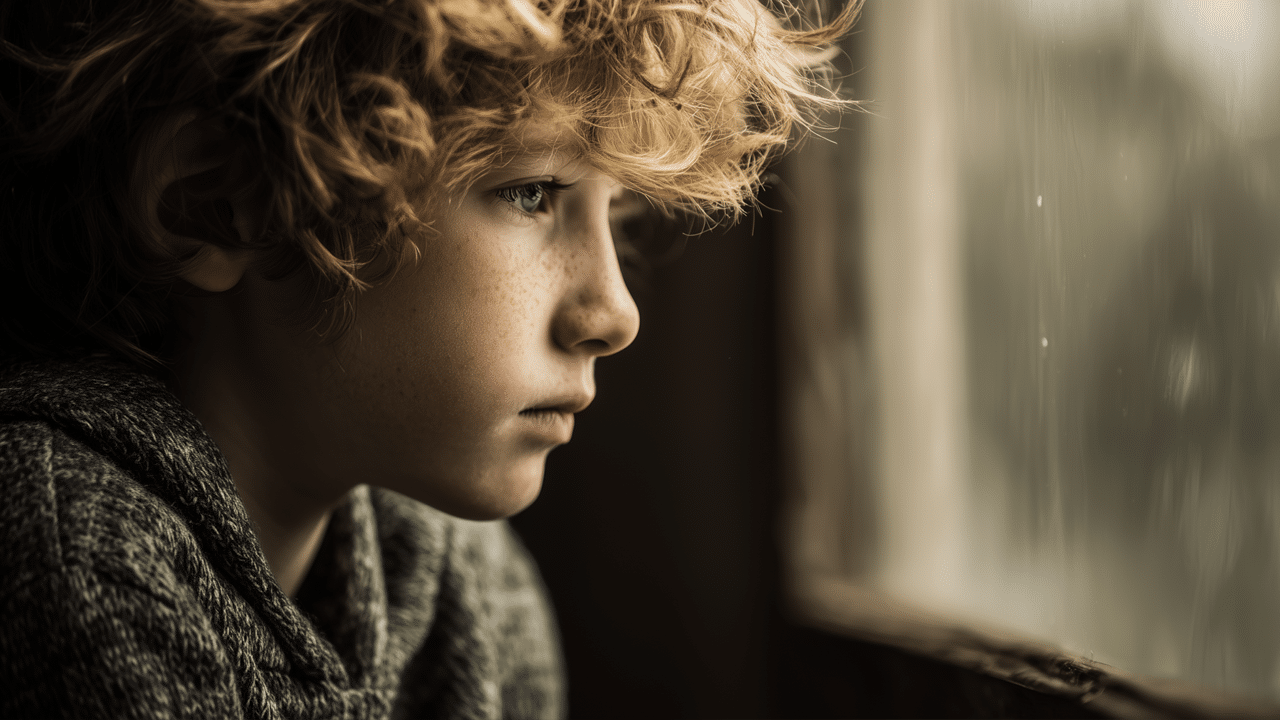Grief is never easy.
And when you’re a parent, your own grief often takes a backseat to your child’s. Maybe they just lost a grandparent, a beloved pet, or someone else close to the family. You can see they’re struggling, but how do you help them process something so big when you barely know how to handle it yourself?
Grief looks different in kids. It doesn’t always show up as tears. Sometimes it’s tantrums, silence, clinginess, or acting totally fine—until suddenly they’re not. That unpredictability makes it hard to know what they need. But one thing is certain: they need you and your steady presence. And sometimes, something a little more structured to help them feel grounded again.
Understanding How Kids Grieve
Grief is not one-size-fits-all, especially when it comes to kids. A preschooler might ask over and over again when Grandpa is coming back. A school-aged child might express anger or suddenly lose interest in things they used to love. A teenager might act distant or seem unaffected.
According to the Child Mind Institute, kids often grieve in bursts. One moment they’re laughing, the next they’re overwhelmed. That’s normal. Their brains can only handle small pieces of grief at a time. And because their understanding of death and loss is still developing, their emotional reactions may feel confusing or even frustrating to adults.
Understanding these patterns helps you stay patient and supportive. It also reminds you that just because your child isn’t talking about their grief doesn’t mean they’re not feeling it.
What to Say (and What Not to Say)
There’s no script for these conversations—but there are a few guidelines that can make a big difference:
- Be honest and simple. Avoid euphemisms like “went to sleep” or “passed away,” which can confuse or even scare younger kids. Instead, use clear, age-appropriate language like “Grandma died. That means we won’t see her anymore.”
- Let them ask questions. You don’t have to have all the answers. Just be willing to listen and say, “That’s a good question. I’m not sure, but I’m here with you.”
- Validate their emotions. Avoid telling them to “be strong.” That can send the message that sadness or fear isn’t OK. Instead, try: “It’s OK to feel sad. I feel that way too.”
The Dougy Center, a national leader in grief education, encourages parents to name the loss directly and keep the door open for ongoing conversations. Kids revisit grief often as they grow, and they’ll need you to walk with them through each new wave.
Why Movement and Structure Matter
Grief disrupts everything. Kids may feel like the world isn’t safe or predictable anymore. That’s where routine and movement come in.
Physical activity is powerful. It helps kids release pent-up energy, express emotions they can’t put into words, and reconnect with their bodies. Martial arts offers all of this—and something more: structure, discipline, and emotional safety.
Movement-based routines can help restore a sense of control and comfort, especially for kids who feel like their emotional world has been turned upside down. In martial arts, every punch, kick, and belt test builds confidence. It teaches kids that even when they fall, they can get up stronger. And that message hits especially hard when they’re grieving.
Emotional Strength Is a Skill
Here’s something many people overlook: resilience isn’t something you’re born with. It’s something you practice. Like balance or focus.
- Breathing through frustration
- Focusing under stress
- Using physical effort as emotional release
- Setting goals and work toward them, even when things feel hard
These are life skills. And they’re exactly what grieving kids need as they start to rebuild a sense of strength and self-worth.
We’ve seen it firsthand. A shy, withdrawn student finds their voice through a confident yell. A child who’s been dealing with deep sadness lights up after breaking their first board. These moments matter.
A Quiet but Powerful Ally
Grief doesn’t have a finish line. But that doesn’t mean your child has to stay stuck in sadness. With the right tools, they can begin to process their pain, rediscover confidence, and grow stronger because of it—not in spite of it.
If your child is struggling after a loss and you’re not sure what to do next, consider trying a class. Not for trophies. Not for toughness. But for healing.
Because sometimes the way forward isn’t about saying the right thing. It’s about giving your child a place to stand tall, take a deep breath, and start moving again.



